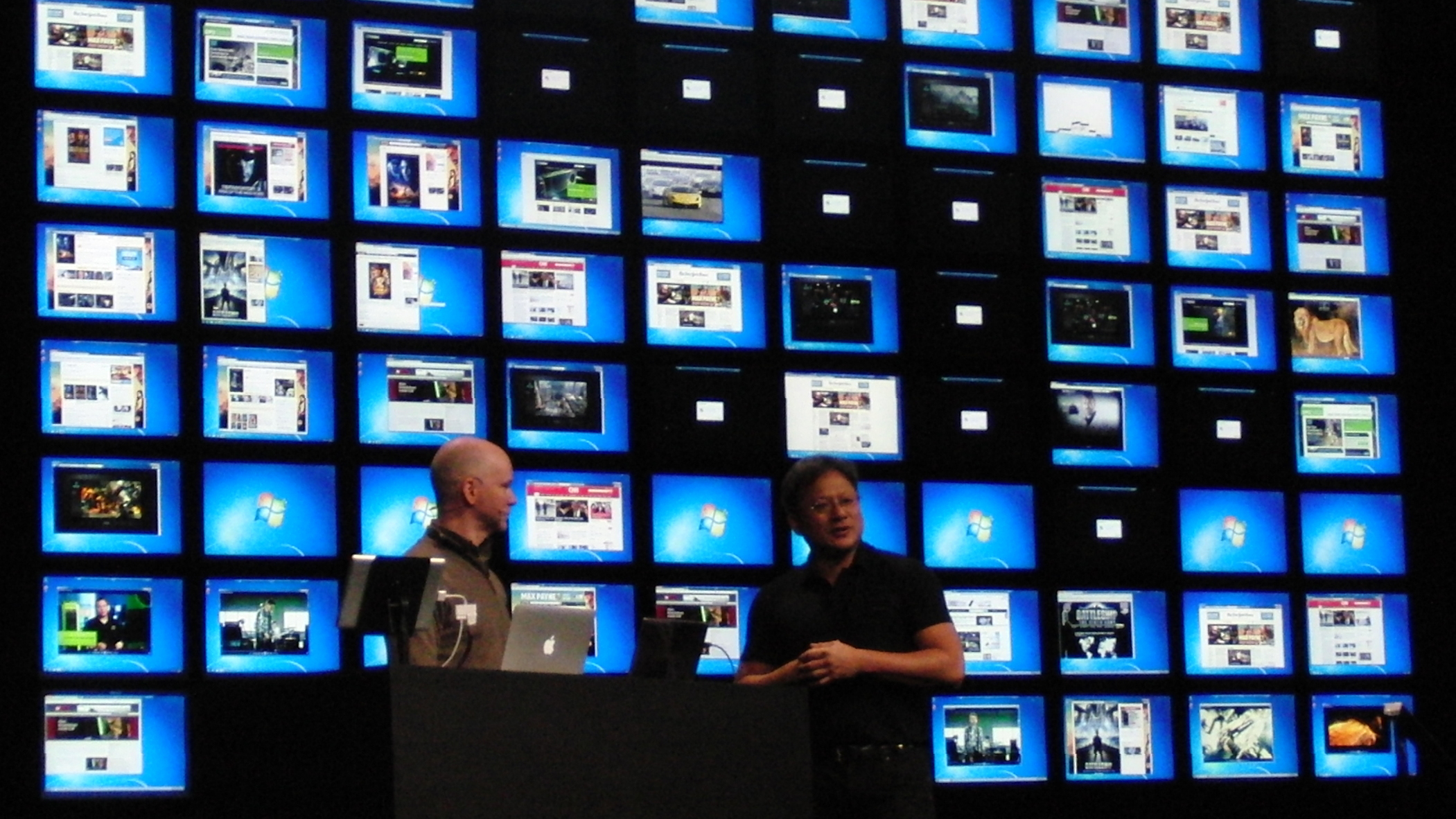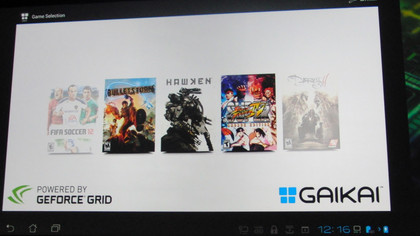GPU in the cloud: what does it mean?

The new Kepler GPU that Nvidia recently announced has been five years in the making.
It will be at the heart of supercomputers that will help make scientific discoveries as well as powering gaming clouds and high resolution remote computing. But why is Kepler more than just another really powerful, really expensive GPU?
If it was just really powerful, Kepler would still be impressive. Demonstrating a combination of fluid simulation and ray tracing, Nvidia CEO Jen-Hsun Huang pointed out that "Doing ray tracing for films takes up the vast majority of processing time – the hours and hours that are necessary to render a frame – and with Kepler we're able to do ray tracing in real time.
"These are real time simulated effects that are only possible because of high performance computing only possible because were really doing fluid simulation, light simulation. Simulation and computer graphics are merging; in a few years computer graphics will look nothing like the easily shaded graphics we see in console games today."

Faster and lower power
Architecturally, Kepler is both faster than the previous Fermi GPU and lower power; there are many more cores but they run at 750MHz rather than 1.3GHz.
Two GPUs on a graphics card like the Kepler-powered GTX 690 will be able to communicate directly with each other; they can also communicate with up to 32 CPU cores instead of just one CPU at a time, and data parallelism means the GPU can look at the results of computations and decide what to do next instead of sending information back to the CPU and waiting for instructions.
It also has a memory management unit; combined with Nvidia's hypervisor and VGX architecture, that lets Kepler be a virtual GPU for remote access with a tool like Citrix Receiver on a tablet or Microsoft RemoteFX on a thin client – or power gaming cloud services that Nvidia is calling GeForce Grid.
Sign up for breaking news, reviews, opinion, top tech deals, and more.
Not all of that is in the first Kepler GPU, the Tesla K10 that's just started shipping, but all the features will be in the Tesla K20, coming in the fourth quarter of 2012.
Services like Playcast and Gaikai will use Kepler GPUs later this year to let you play console-style games on any device with an H.264 decoder. That's similar to the OnLive service but Nvidia General Manager Phil Eisler says GeForce Grid will be much more efficient to run.

"With the first generation of cloud gaming that's out there, you pretty much take a one to one ratio of one computer, one graphics card to one game, which is pretty expensive. The new Kepler architecture is much more power efficient; we can actually render a game in half the power.
"Plus the built in encoder means you can offload encoding from the CPU so you can run many more games per server; you can go from what is effectively one game per server to about eight games per server and that reduces the cost by that much and reduces power by half."
The cost of running a service will be low enough that Nvidia CEO Jen-Hsuan Huang told TechRadar the expects the monthly price for access to mainstream games will be the same as streaming films from Netflix. "Our goal is to be streaming at a cost level like Netflix. In which case you'll be able to enjoy hundres of games, thousands of games in a library for $10 a month. And for blockbuster video games the moment that it comes out, the nanosecond it comes out, you'll be able to enjoy that for some premium charge."
Huang thinks that cable TV companies and Internet TV providers will offer their own gaming services. "They offer different channels and instead of ABC and CBS there would be potentially a channel that says GeForce GRID and has a whole bunch of games inside."
Kepler is going to power high resolution remote computing for work and high performance gaming in the cloud, but what about putting it in your home PC and having your own cloud? Huang likes the idea but he's realistic about how well it would work in practice.
"The challenge is you want to be able to stream at a very low latency and that PC sitting in a den somewhere is literally right in front of you but we need to stream that over the clumsy Wi-Fi in people homes so there's a lot of obstacles. That's exactly the PC I want at home though. I want a PC with three GTX 690s - because that's the most you can put in a PC- and put that in the basement somewhere and just stream it to wherever our family happens to be."
One thing Nvidia isn't talking about this week is whether any of the same technology powering Kepler is going to show up in the ARM CPU it promised to build back at CES 2011, but Project Denver is still going strong according to Chief Scientist Bill Dally.
"It's an ARM core with performance better than you can get with cores availability from ARM and it has substantially better energy efficiency even at this higher performance. That's all we're saying about it now, because we don't want to tip our hand and have our competitors know what we're doing."
Huang is making his usual bold predictions about Project Denver though; "You are going to be so happy," he promised. It doesn't sound as if they'll be ready for the Windows RT launch though.
Mary (Twitter, Google+, website) started her career at Future Publishing, saw the AOL meltdown first hand the first time around when she ran the AOL UK computing channel, and she's been a freelance tech writer for over a decade. She's used every version of Windows and Office released, and every smartphone too, but she's still looking for the perfect tablet. Yes, she really does have USB earrings.